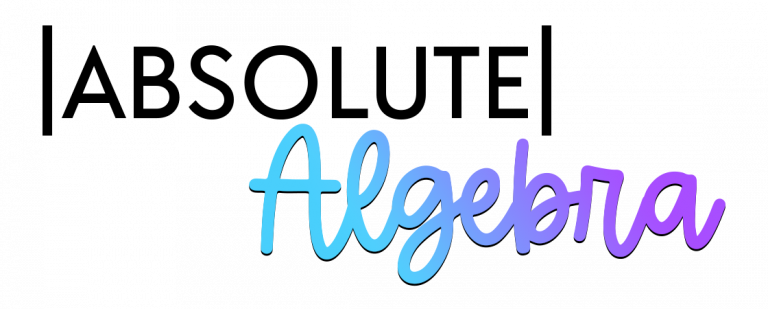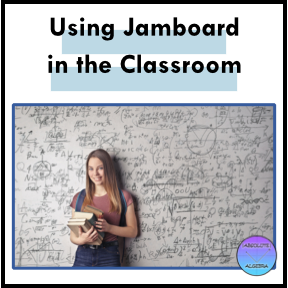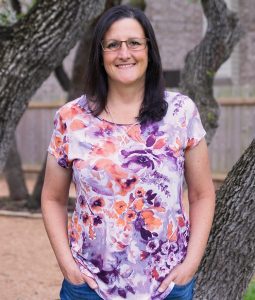Note: These ideas are created with middle school and high school students in mind. Okay, you set up math stations, you assign groups to them, and then you glance around the classroom wondering if the students are actually doing what they are supposed to be doing. Here is what you need to know to conquer math stations in the classroom.
Steps for the Teacher
- Decide how you want the stations organized. Do you want the day to be about standards, review, or a specific topic?
- Decide how many stations you will need based on the limit of people you want at each station. For example if there are 30 students in your class and you only want 5 students per station, you may want to have 7 stations for when students finish early. Do not set a time limit since some students will need more time than others.
- Before you begin the stations, have students write down their goal number on a recording sheet (example below). They should decide this number. For example, let’s say you decide the most points they can get is 100 points. If a student chooses his goal to be 80 points by the end of station time, that would be their grade as long as they can also show their accountability portions of the stations.
- Include detailed directions posted at each station. See below for examples. The directions should include:
- Name of the Station
- Point Value
- Rules including the student limit per station
- Expectation
- Accountability Piece (Each station should have a way to help the students be and stay accountable for the material they are practicing.)
- Other
- Teacher can be the facilitator during the stations by walking around and making sure students are on task.
- Students turn in the recording sheet with any accountability material that needs to be attached.
Other Suggestions for Math Stations
- You can also differentiate the stations by adjusting the expectations or the point value per student based on their personal skill level.
- All students may not have to join each station. It depends on your students’ needs. You could assign which stations students need to go to or let them choose. For example, if you know a student has a hard time with multiplication facts, make sure you assign her to that station.
- You may want to give the students the answers to the problems in certain stations and have the accountability portion be to show their work.
- If a student is off task the teacher can assign a station activity to be completed separately from his/her classmates.
Math Stations Direction Sheet Examples
Put these at each station so students know what is expected of them.
| Error Analysis Station (20 points)
Rules: No more than 5 students at a time or the teacher will choose who needs to move to a different station. Directions: You must complete 4 cards. Accountability: Number them on a sheet of paper, find the error, and then solve it correctly. Note: Do not copy! The teacher may ask you a clarifying question when you turn in the problems. If you cannot answer it, then you may not get the points. |
| Peer Tutoring Station (15 points for each student)
Rules: No more than 6 students at a time or the teacher will choose who needs to move to a different station. Directions: Expert helper explains 2-3 problems to their peer. Accountability: Teacher will give a problem to the student who just learned the material to work independently. If the student cannot answer the question or explain the process, neither student gets their points for the station. Note: The last problem must be completed independently. The experthelper may not help. |
Ways to Show Accountability
- Students must show their work to receive credit. Writing the process is better than getting the correct answer when learning the material.
- Teacher asks a clarifying question and the student needs to answer correctly to show that they did not just copy from a peer. If they cannot answer, the
students do not get the credit until they have learned it and can explain it to you. - Students take a picture of the completed task and email it to the teacher.

Math Stations Examples with Accountability
- Error Analysis Task Cards: Creates rigor and enhances critical thinking skills. Accountability: Write the error and solve the problem correctly. Then attach the work to the recording sheet. (See below.)
- Test Prep Task Cards: Students can practice for their next test, quiz, or state test. Accountability: Students show work and/or explain on paper why their answer is correct. If these are multiple choice questions, they can also try to figure out why the other answers are incorrect (identify distractors).
- Math Facts: Use these with your lower level students. Accountability: Students can use google forms to answer the questions. Settings can be for unlimited submissions until they get 100.
- Spiraling Review Stations: Use Khan Academy or IXL.com so students get immediate feedback. Accountability: Teacher can see what was completed through the computer program
- Hands-On Activities: Use Algebra tiles. Accountability: Take or draw a picture with your phone or computer.
- Writing in Math: Explain a process of how to solve a problem. Accountability: Attach the written process to the recording sheet.
- Game: Play a game with a peer. Accountability: Write down who won on the recording sheet and attach any work.
- Peer Tutoring (Expert Helpers): Teacher should assign the expert helper (tutor) with the other student (tutee). The tutor and the tutee should each be able to earn points. Accountability: When the students are done tutoring, the teacher gives the tutee a problem to complete based on what he/she was working on with the tutor. If the tutee can answer the question or explain the proess to the teacher, points should be given to each student. Otherwise, no points are rewarded.
Student Recording Sheet Example
Have student record what they do at each station by attaching their work to the recording sheet. Students should also fill out the reflection portion.

Why should I use a reflection sheet
for math stations?
- To get a “temperature check” on how each student felt during the station times
- For helping students organize their thoughts and to think about what they may need to do next
- To see if any of the stations were too easy or too difficult
- To see which activities they enjoyed or disliked
- For helping them realize if they wasted their time or used it wisely
with math stations in your classroom!
Click on some middle school activities below to use with math stations.
- Multiple Choice Test Prep Cards (STAAR aligned) 6th Grade
- Multiple Choice Test Prep Cards (STAAR aligned) 7th Grade
- Translating Verbal to Algebraic Expressions, Equations, and Inequalities: Cut and Paste Activity
- Graphing Rational Numbers on a Coordinate Plane: Find the Pattern Activity
Click on some Algebra activities below to use with math stations.
- Multiple Choice Test Prep Cards (STAAR aligned) Algebra I
- Error Analysis Task Cards
- Standard Form of Linear Equations Find the Pattern Activity
- Parallel and Perpendicular Lines $100,000 Pyramid Activity
You can also follow my store to get notifications on my newest products.
You can also connect with me throughFacebook or Instagram by clicking on the link at the bottom of the page. Do you have any other ideas on how
to conquer math stations in your classroom? I would love to read them!
Let me know in the comments below.





